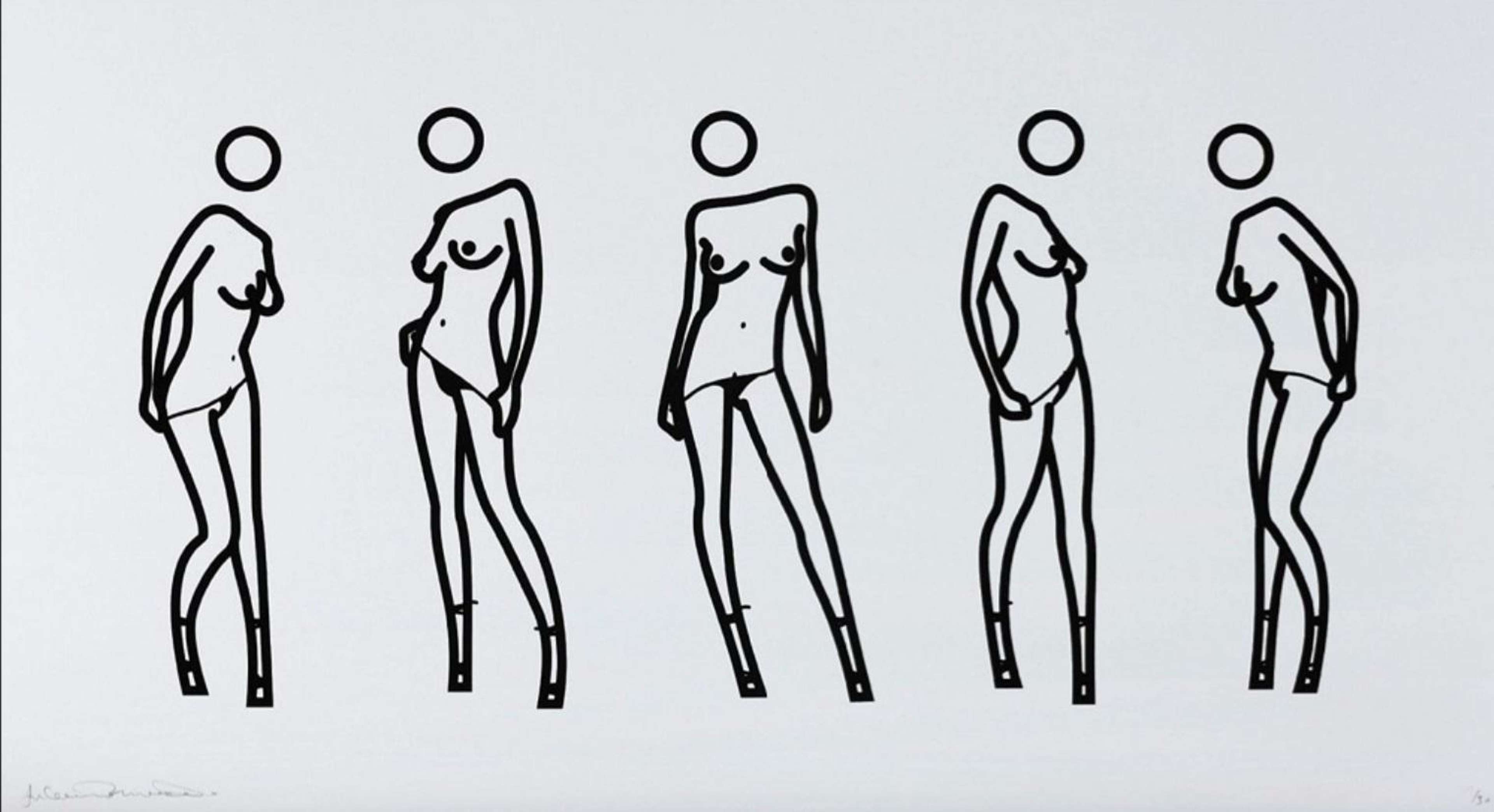Bijou Gets Undressed 4

Bijou Gets Undressed 4
Signed Print
Julian Opie
£8,000-£12,000
$16,000-$24,000 Value Indicator
$15,000-$22,000 Value Indicator
¥80,000-¥110,000 Value Indicator
€9,000-€13,500 Value Indicator
$80,000-$120,000 Value Indicator
¥1,660,000-¥2,490,000 Value Indicator
$10,500-$16,000 Value Indicator
There aren't enough data points on this work for a comprehensive result. Please speak to a specialist by making an enquiry.
38 x 77cm, Edition of 30, Screenprint
Auction Results

Track auction value trend
Meaning & Analysis
Showing an image of a half-dressed figure in a sequence of poses, Bijou Gets Undressed 4 is a print from Julian Opie’s Bijou Gets Undressed series from 2004. Opie depicts the model in his simplified linear style, reduced to a clear-cut outline of torso and limbs, circle for a head and two curved lines for breasts. Unlike the artists' depictions of figures wearing clothes, these figures are formed merely by suggestive contours.
Bijou Gets Undressed 4 is somewhat symmetrical in its composition, showing the central figure face-on and two figures on either side in opposing stances. The figure is defined by her sensual, elegant poses that are familiar from pop culture and film, thus allowing the viewer to project their own experiences onto the image. This paradox between the familiar and the unknown that the print conveys is highlighted by Opie’s anonymisation of the model, her head a mere blank circle floating above her body.
Never erasing the personality of his models, Opie emphasises the particularities of an individual through the reduction of frivolous details and a focus on pose. At the same time, there is a utilitarian quality to Opie’s visual language through his use of simplified shape and form to create a system of signs. In doing this, Opie asks the viewer whether we are all reducible to predetermined ‘types.’